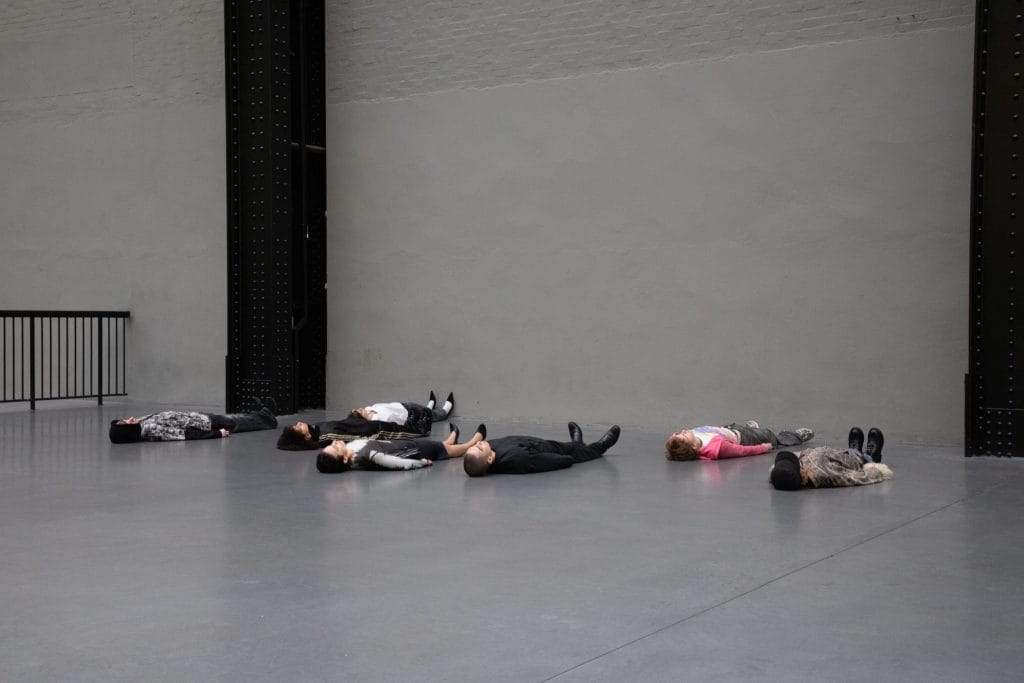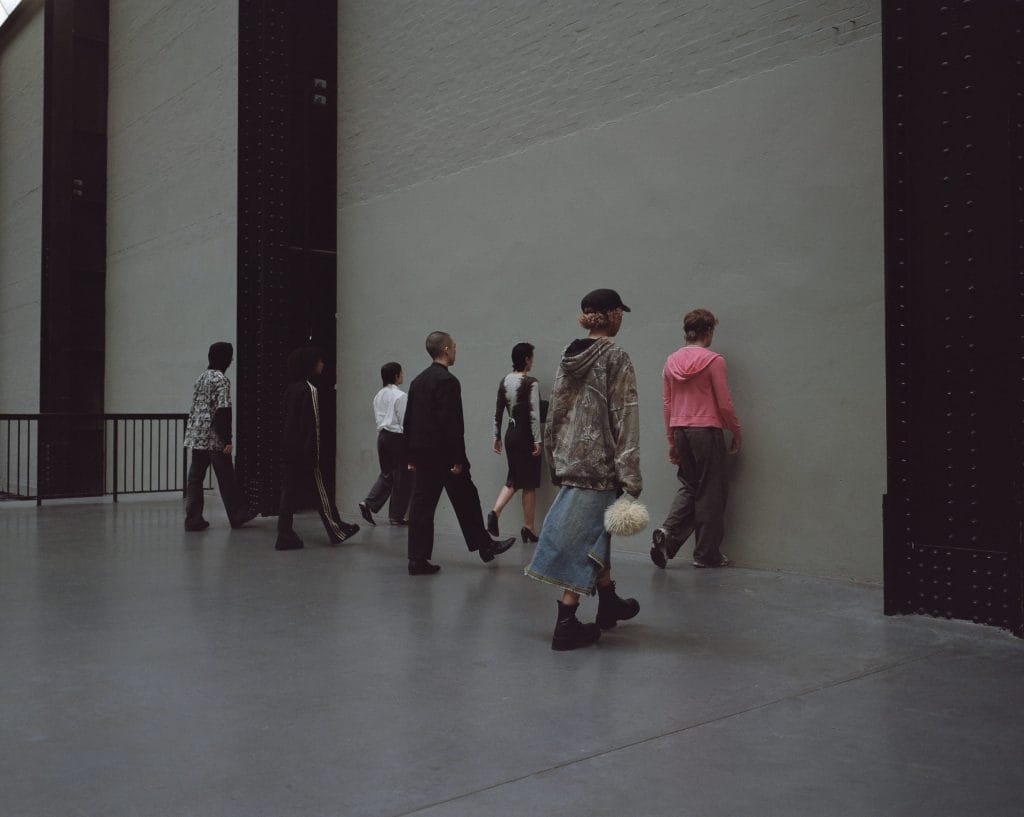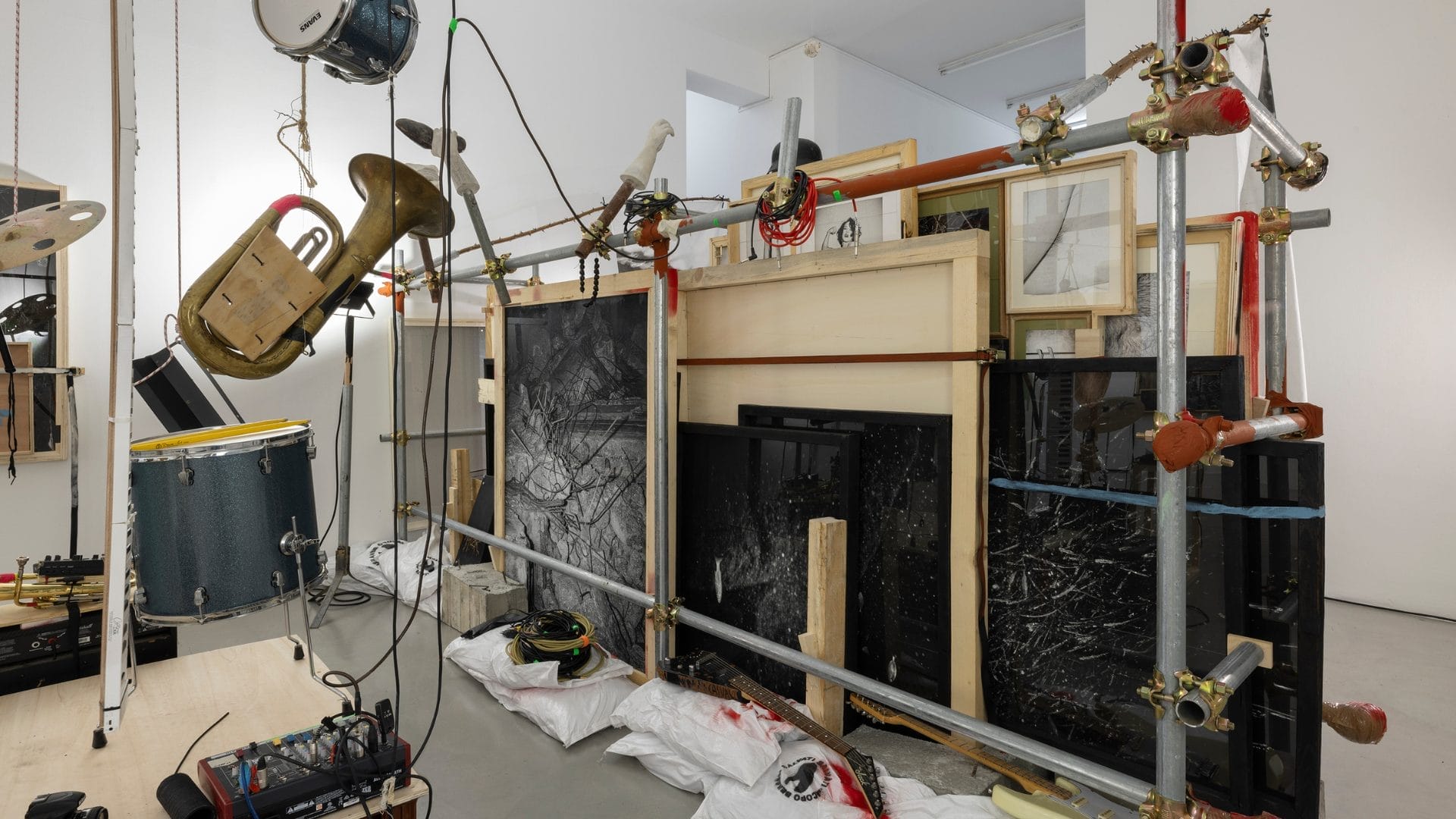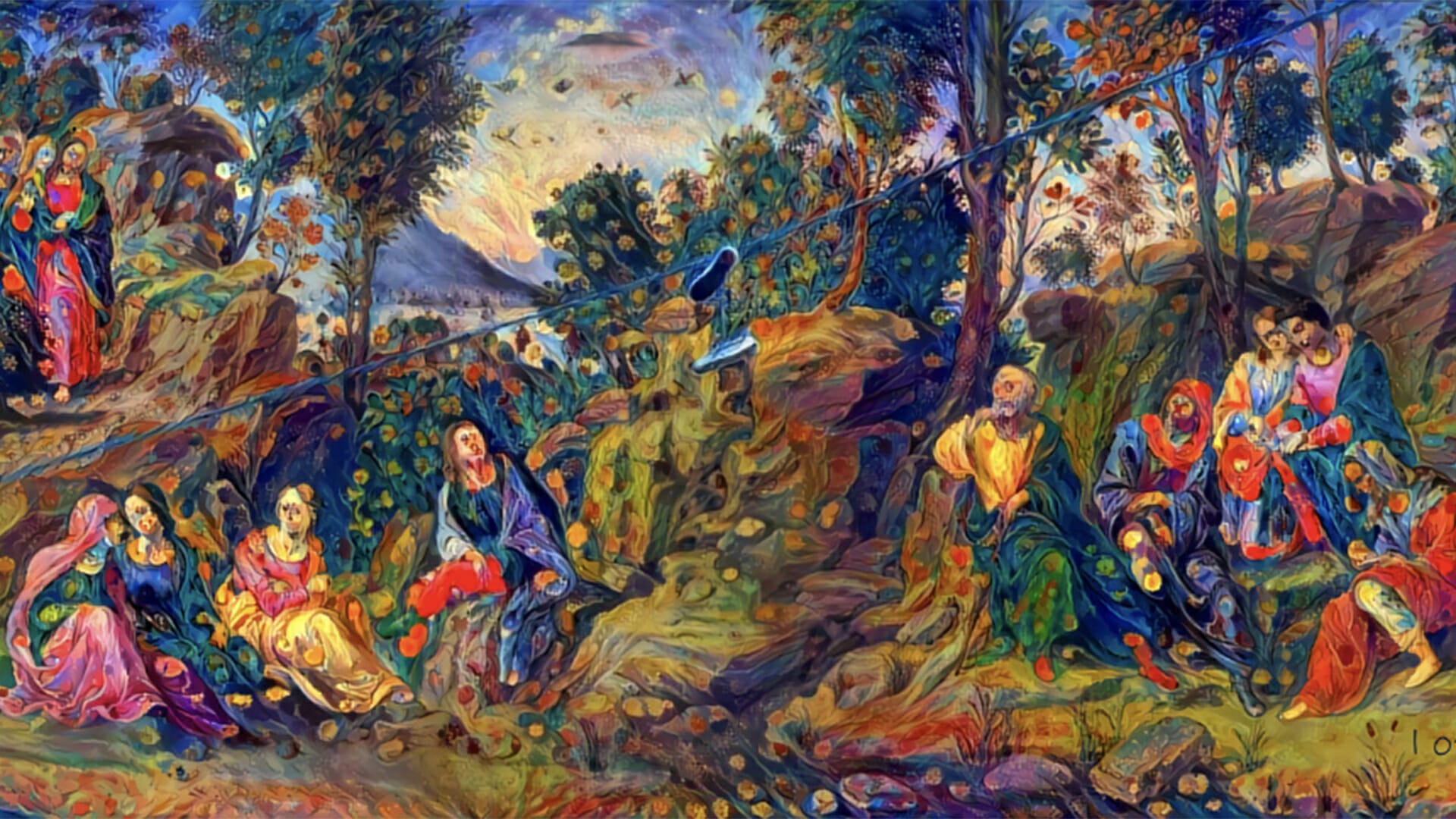
Fakewhale in dialogue with Joan Horrach
Today, we are pleased to engage in conversation with Joan Horrach, an artist whose work is characterized by deep reflections on the human condition through corporeal performance. His latest piece, “Somehow, Elsewhere,” presented at the Tate Modern in London, has profoundly impacted us. Through a series of repetitive and alienating movements, Horrach explores the mechanization of our lives and the loss of human connection in an era dominated by technology. In the following dialogue, we have attempted to connect with the themes that animate his artistic practice, references to distortions of reality, and the role of performance in commenting on contemporary social dynamics.

“Somehow, Elsewhere” surprised the audience at the Tate Modern with a sudden and unannounced action. Why did you choose not to anticipate the event and allow the public and even the museum security to be caught off guard?
The decision to present the piece without any prior public announcement was intentional. A lot of my work aims to question the traditional structure of how we encounter performance. Rather than attracting an audience already familiar with my work or performance art itself, I wanted to see how people would react when they stumbled upon it organically.
I think that the way it appeared within the space is also partly connected to the more conceptual part of the project. I didn’t want the piece to immediately register as a performance. The work begins with one person seen walking back and forth alone in front of a wall, seemingly disconnected. I liked the idea that people might not recognize it as a performance at first, possibly wondering if the individual was crazy as if it was caught in some sort of glitch or detached from reality. The Security even approached her, but she didn’t respond. As more performers gradually joined in, people began to realize it was a planned event, but I see an importance in those initial moments of confusion that appear as errors of human behavior.

The work unfolds in front of a massive wall, with the performers trapped in purposeless repetition. What significance do you attribute to this spatial limitation, and how does it affect the way the audience perceives the movement and its lack of direction?
The presence of the wall is a crucial element of the piece. Without a physical limitation, the work simply doesn’t function. While there is a poetic reasoning behind this choice, it reflects a broader observation about life: we walk through life and we encounter walls over and over again, we have the impression that we are onto something or that we have found some sort of direction only to be pushed backwards, once again, It’s a constant repetition.
I wanted to create a choreographic device that would physically depict people in motion yet going nowhere as a way to acknowledge the feelings of stagnation that fill our lives—whether they relate to personal struggles, career frustrations, or physical limitations. These sensations of being stuck, despite continuous effort, are something many of us face. I really would like people to question “In what aspects of my life can I be like this” I think it’s a productive question.

The human body is central in your work, described as the main narrative and communication tool. Can you delve deeper into what attracts you to physicality and how the body becomes the vehicle for your reflections on the human condition?
I guess that every artist has their own medium that allows them to communicate in the best way possible. For me, using the body seems like the most efficient way to talk about the body itself.
Perhaps everything we do is the response of an initial physical experience. A lot of my work consists in recreating or simply creating a new physical experience. “Somehow, Elsewhere” has two layers: the outside perspective and the inside perspective which only the performers can feel. What do they go through when they are performing this repetitive action for 45 minutes, what do they think about, how does it feel to be trapped for a certain amount of time in a “condition” that someone else has created and what do they get from it?
I believe performance to be a very direct form of art, I guess that’s why I have used it as a principle medium in my practice.
The title “Somehow, Elsewhere” alludes to a disconnection between the body and the mind, as if the performers are physically present but mentally absent. Can you explain how this concept relates to the effect that technology has on the way we interact with the world and with others?
The title can be interpreted in many ways, but I chose ‘Somehow, Elsewhere’ because I find both words evocative and poetic. Ultimately, I wanted to explore our constant desire for ‘elsewhere.’ We live in a society that is continuously developing new forms of media, offering endless ways to escape from physical reality. It’s fascinating how so many people can share the same physical space, yet each is lost in a completely different reality within themselves.
However, I’m not particularly interested in analyzing or solving these issues through my work. I don’t focus on the problem itself—whether it’s the media or the concept of escapism. What fascinates me is the physicality of it, the way it manifests in the body. For example, think of someone lying in bed, scrolling through their phone. I’m not focused on the media on the screen or the act of scrolling; I’m interested in their physical appearance—their eyes, their facial expression, their posture. That’s what captures my attention.
In the piece, I depict people walking together but profoundly disconnected from one another. The choreography intentionally creates a mechanical quality in the performers’ movements. To me, this reflects how we might appear from a detached perspective—individuals moving mechanically through shared spaces, yet disconnected on a deeper level.

In the performance, the performers move together, yet they seem profoundly alone. Do you believe that this isolation, even in the presence of others, reflects how technology has influenced human relationships?
Yes
You’ve said that your practice focuses on “recontextualizing the body in familiar but reinvented scenarios.” Can you further develop this?
I always connect this sentence to the ready-made art work: In many ways it is to take something that belongs to the everyday and recontextualise it within a new configuration so that we can see that specific thing from a new light or a new perspective. In this case for this performance I take the action of walking and distort it in a way so that people aren’t actually walking anywhere so there are two tools used: distortion and exaggeration. These two elements are present though there still remains an aspect of familiarity, I think this is something that works well together and I believe it is through distortion and exaggeration that we can see things clearer. To observe the action of walking without its purpose of getting you from A to B.
Often, your works do not have a clear beginning or end, leaving the audience in a state of waiting or uncertainty. How do you hope this type of temporal structure affects the spectator’s participation and interpretation?
I come from the dance world, most pieces have a beginning, middle and end, when they end the audience applauds and then the performers bow, I am not aiming for that with the work I am currently making. I am not that much of a fan of creating anything that will entertain anyone. In fact I am quite interested in my works having some aspects of nothingness and boredom to them.
I want people to have the same interaction they might have when they encounter a sculpture in a gallery. I always argue that my work does not come from a performative ambition but a sculptural one. I want them to look at the image, maybe take a picture for their instagram and leave. This piece is very very simple, it is just people walking backwards and forwards in front of a wall. That’s pretty much it. Hopefully there is a statement somewhere there, the moment you get what I’m trying to say, then the rest doesn’t matter to me as much.

Looking to the future, are there other themes or social phenomena that you are exploring and that you think might become an integral part of your upcoming performances?
The topic of “subjective centrality” interests me. Are we all inherently trapped within our own life’s perspectives on the world etc… Or are we truly capable of empathy, of seeing beyond ourselves and understanding the world from viewpoints other than our own? And lastly, the question I am still trying to figure the fuck out: What unites us all? And how can we be less of “Somehow, Elsewhere”.
fakewhale
Founded in 2021, Fakewhale advocates the digital art market's evolution. Viewing NFT technology as a container for art, and leveraging the expansive scope of digital culture, Fakewhale strives to shape a new ecosystem in which art and technology become the starting point, rather than the final destination.
You may also like
Fakewhale in Dialogue with Jacopo Benassi: The Visceral Tension of an Uncompromising Vision
Fakewhale had the pleasure of speaking with Jacopo Benassi, a multifaceted artist who moves fluidly
Community, Infinite Games, & Cryptoart
The C-word Community, community, community. Wtf even is community? From crypto to whatever the lates
Sandra Mujinga, Skin to Skin at Stedelijk Museum, an Interview by Matteo Giovanelli
On September 11th, the Stedelijk Museum (Amsterdam, NL) opened Skin to Skin, the new solo show by Sa




